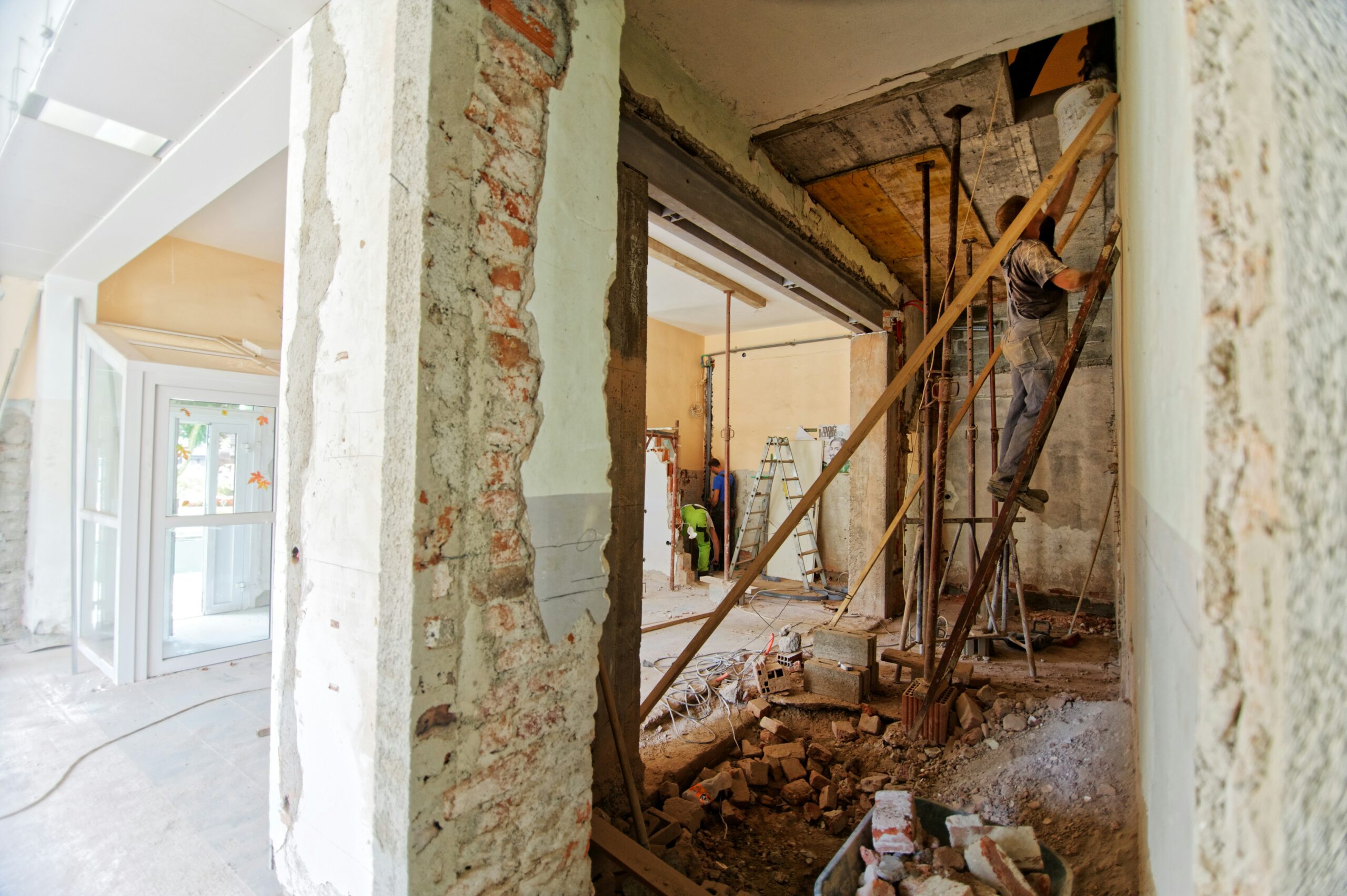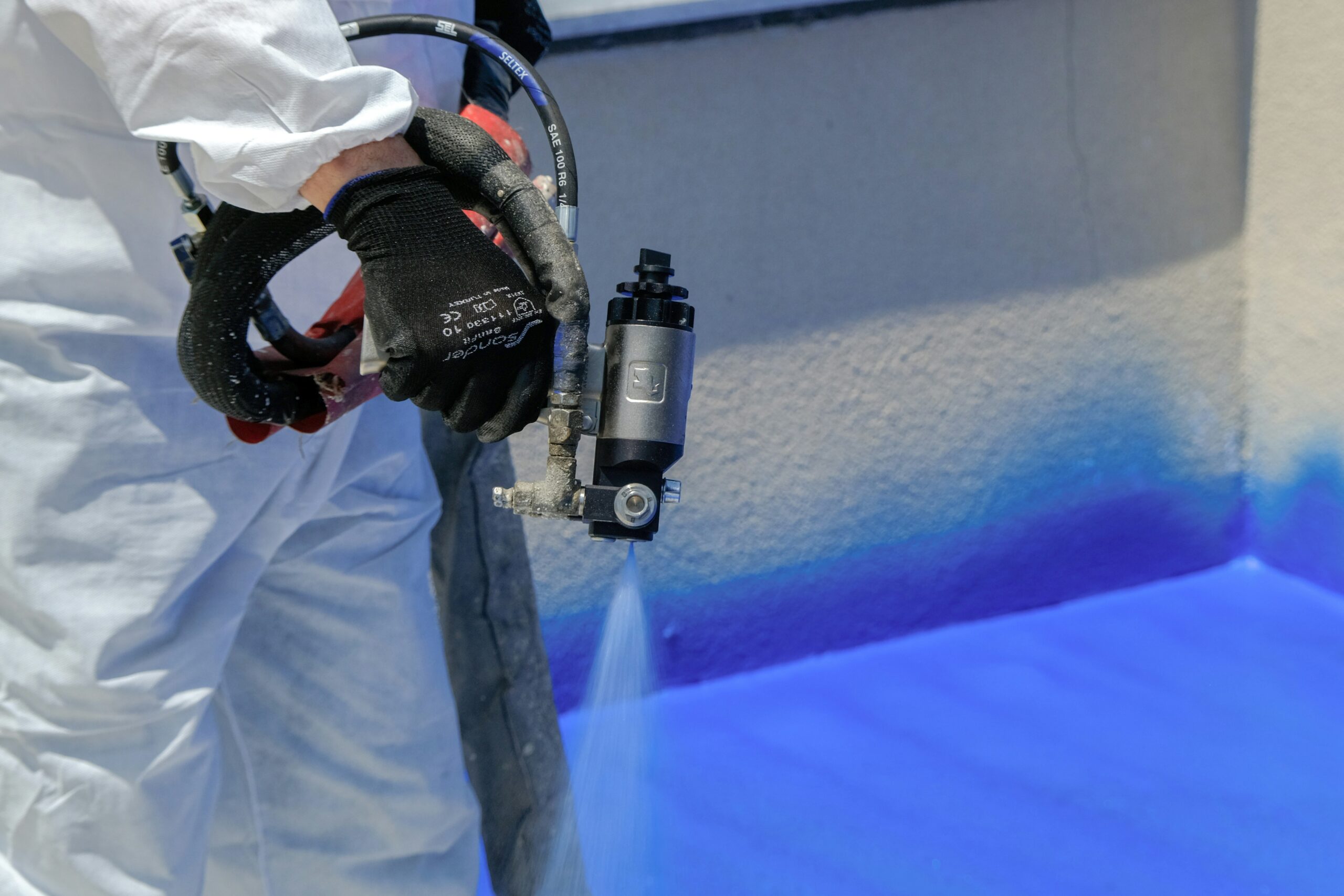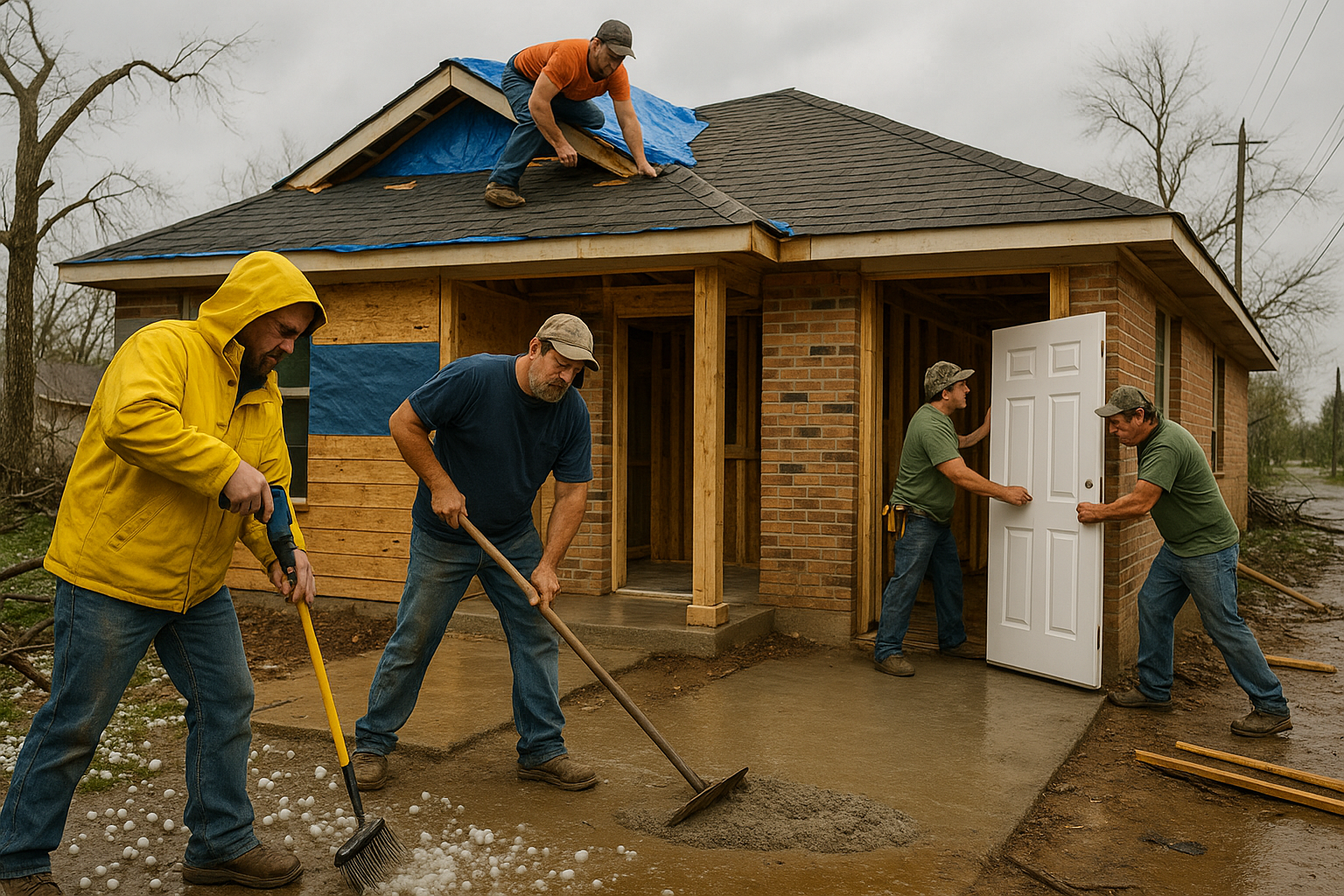
Buying or building a home in Texas has never been more expensive. Families in Dallas–Fort Worth, Houston, and Austin are facing some of the fastest-rising housing costs in the nation. When every dollar counts, it surprises many people to learn that the International Residential Code (IRC) — the book of rules that governs how houses are built — actually lists “affordability” as one of its core purposes.
If the code itself says housing must be affordable, then why aren’t today’s houses affordable? Let’s unpack what that really means — and why it matters for Texans navigating the housing market.
The IRC: The Rulebook for Home Construction
The IRC is the baseline standard for nearly all new single-family homes and townhomes in Texas. Cities and counties adopt it (usually with local amendments), and inspectors use it to ensure builders meet minimum safety and performance requirements.
Section R101.3 of the IRC states:
“The purpose of this code is to establish minimum requirements to safeguard the public safety, health and general welfare through affordability, structural strength, means of egress facilities, stability, sanitation, light and ventilation, energy conservation, and safety to life and property from fire and other hazards attributed to the built environment, and to provide safety to fire fighters and emergency responders during emergency operations.”
Notice the very first word: affordability.
How “Affordability” Got into the Code
Before 2015, affordability wasn’t mentioned at all. The code’s intent was focused entirely on health and safety. That changed when the National Association of Home Builders (NAHB) successfully lobbied to insert the term during the 2012–2015 code hearings.
The argument was simple: new code provisions, especially in areas like energy efficiency and structural resilience, were driving up construction costs. To protect consumers, affordability needed to be explicitly recognized.
But there’s a catch. While the word was added, no definitions, measurements, or enforcement tools came with it. In other words, “affordability” was written in for political reasons, not technical ones.
Does Affordability Really Come First?
By listing affordability ahead of structural safety, fire safety, and sanitation, the code appears to suggest it’s the top priority. But that’s not how it plays out in real life.
- Inspectors don’t measure affordability. There’s no formula or checklist that allows me to say, “This home is affordable; therefore, it passes.”
- Life safety cannot be bargained away. Builders cannot justify leaving out fire blocking, cutting corners on wiring, or weakening foundations simply because it would cost less.
- Courts treat safety as paramount. When building disputes reach litigation, judges consistently hold that health, habitability, and good workmanship override cost every time.
So while affordability sits first in the sentence, it does not legally outrank safety.
Why Houses Still Aren’t Affordable
If affordability is in the code, why are homes across Texas anything but affordable? The truth is that building codes are not the main driver of cost.
The biggest contributors are:
- Land prices – the cost of lots has surged, especially in metro areas.
- Labor shortages – fewer skilled tradespeople mean higher wages and longer build times.
- Material supply chains – lumber, steel, and concrete costs fluctuate wildly.
- Builder profits and marketing – many “standard” homes are packed with upgrades that inflate prices.
By contrast, code updates add relatively little. Studies by HUD and the ICC have found that most new safety or energy provisions increase the cost of a home by 1–2% at most. Land and financing can swing prices by 20–40%.
What This Means for Texas Homeowners
The inclusion of affordability in the IRC has a few practical consequences:
- Builders use it as a talking point. They may claim stricter inspections or upgraded code requirements hurt affordability.
- Homeowners should be skeptical. The word “affordability” in the code is not a free pass for shortcuts. It doesn’t excuse unsafe or substandard construction.
- Minimum code is just that — minimum. Even with affordability written in, the IRC sets only the lowest bar for acceptable construction. Many builders barely meet it.
For buyers, this means a new home isn’t guaranteed to be affordable, and more importantly, it isn’t guaranteed to be well-built just because it passed inspection.
The Texas Legal Angle
In Texas, affordability cannot erase fundamental homeowner protections. Courts have long held that every home carries implied warranties of habitability and good workmanship.
- Humber v. Morton (Tex. 1968) established that new homes must be habitable.
- Melody Home Mfg. v. Barnes (Tex. 1987) reinforced the warranty of good workmanship.
Neither of these can be waived because of affordability. A builder can’t argue, “We skipped that because it was too expensive.”
The Inspector’s Perspective
As an ICC-certified Residential Combination Inspector and TREC-licensed inspector, I’ve seen thousands of homes across North Texas. My conclusion is simple: affordability in the IRC is symbolic, not practical.
Homes today are not affordable in the true sense, and the presence of that word in the code hasn’t changed the reality for buyers. If anything, it has given builders a convenient slogan when fighting against stronger safety or energy requirements.
That’s why independent inspection is critical. The code sets a floor, but it does not ensure value, quality, or affordability. Only a thorough, unbiased inspection can protect your investment.
Takeaway for Homebuyers and Owners
- Don’t be fooled by the word “affordability” in the building code. It doesn’t mean your house will be affordable.
- The real purpose of the IRC is — and always has been — safety and habitability.
- Housing costs in Texas are driven by market forces, not the inspector who insists a foundation be properly reinforced or that wiring meet the National Electrical Code.
Bottom line: Affordability may be written into the code, but it doesn’t protect your wallet. What protects you is making sure your home is safe, durable, and code-compliant. That’s why hiring an independent inspector is one of the most affordable decisions you

When people hear about modular homes, one of the first questions that comes up is: “Won’t this put construction workers out of a job?” It’s a fair concern — especially in Texas, where so much of our economy depends on residential construction. But the truth is more nuanced. A shift to modular building wouldn’t make jobs disappear. Instead, it would change where those jobs happen and what skills they require.
The Only Path to Enough Affordable Housing
Here is the unavoidable reality: modular homes are the only viable way to produce enough durable, affordable housing to meet Texas demand. Traditional stick-built methods simply cannot scale fast enough to keep pace with population growth, urban expansion, and affordability pressures.
Factory-built modules allow for consistency, speed, and tighter quality control. More importantly, they keep housing supply from falling further behind demand — which is the single biggest driver of high home prices. By shifting much of the work indoors, Texas can build more homes that are code-compliant, energy-efficient, and long-lasting while keeping labor needs balanced between factory and site work.
Jobs Aren’t Disappearing — They’re Moving
Traditional homebuilding in Texas relies on large on-site crews: framers, drywall installers, electricians, and finish carpenters. Under the International Residential Code (IRC), adopted by nearly every Texas city, many of these trades must complete their work on site to comply with requirements for structure, electrical safety, plumbing, and energy efficiency (IRC Chapters 3, 6, 13; 2023 NEC; 2021 IECC).
With modular construction, much of that work shifts indoors to a factory setting. Walls, wiring, plumbing, and insulation are completed before the modules ever arrive on the lot. The same code rules still apply — IRC R109.1.5 requires third-party inspections and state approval for industrialized housing modules — but the labor to achieve compliance happens in a controlled plant, not outdoors on a jobsite.
That means fewer hot, weather-delayed days for crews on Texas lots, and more steady, year-round jobs in modular plants. Think of it less like “lost jobs” and more like jobs relocated.
Different Work, Same Codes
Modular factories still need licensed electricians, plumbers, and HVAC techs. The 2023 National Electrical Code (NEC) and Texas Occupations Code Chapter 1305 require licensed electricians for wiring, whether in a house or in a modular plant. Likewise, plumbing must comply with IRC Chapter 27 and be installed by licensed plumbers under Texas law.
The difference is the setting: instead of improvising in the field, workers specialize in precision and efficiency on an assembly line. On site, work shifts toward foundation prep, crane operations, and system connections. Those pieces can’t be moved indoors — and they’re still subject to local inspection under IRC R109.1.1 (site inspections).
Regional Impacts in Texas
- Metro areas (Dallas, Houston, San Antonio) with modular plants nearby could see job growth in factory and shipping work.
- Rural areas without nearby plants may see less traditional framing and drywall work.
- Immigrant crews, who currently make up a large part of Texas residential field labor, may find fewer seasonal jobs if factories hire more permanent, year-round employees.
Wages may shift too: factory work often pays less per hour than specialized site trades, but it usually comes with steadier hours and benefits.
Lessons From the Past
Texas has already lived through this kind of change. Forty years ago, framers cut every roof rafter on site. Today, most homes use prefabricated trusses made in plants. Did framing jobs vanish? No — they shifted.
Another example: auto manufacturing. Millions once worked in small garages; mass production moved the work into factories. The jobs didn’t disappear — they transformed.
What It Means for Homebuyers
For Texas buyers, the bottom line is this: modular homes won’t destroy construction jobs — they’ll redistribute them. The codes — IRC, IECC, and NEC — still apply, and builders remain legally obligated to comply with them whether the work is done in a plant or in a subdivision lot.
That’s good news for buyers. Modular construction is not just a trend; it’s the only practical solution to the shortage of affordable, durable homes in Texas. Factory precision means fewer mistakes, faster build times, and potentially lower costs. Meanwhile, the Texas housing market will continue to support thousands of workers — just in new roles that fit the demands of the future.
Takeaway: Choosing a modular home doesn’t undercut the Texas workforce. It supports a transition that makes affordable housing possible at scale, while holding builders to the same codes and standards that protect every homeowner in this state.

In Dallas-Fort Worth, house flippers are everywhere. They buy the cheapest, roughest houses on the block, slap on cosmetic upgrades, and list them as “completely remodeled.” Buyers walk in and see stainless steel appliances, trendy gray paint, and new flooring. What you don’t see is the dangerous mess left hiding behind the walls. See: https://www.texasinspector.com/2017/05/little-lipstick-pig/
Paint Doesn’t Fix a Foundation
Cracks in the slab? Termite-chewed studs? Roof rot? Don’t expect a flipper to fix any of it. Their business model is simple: hide it, not repair it. Cosmetic upgrades cover over structural issues that the International Residential Code (IRC) requires to be corrected (IRC R301, R502, R602). You may be buying a home that looks HGTV-ready but is one storm or one season of soil movement away from major failure.
Shocking Electrical Work
Flip crews often work without licensed electricians, permits, or inspections. The result? Exposed splices, undersized wiring, reversed polarity, and missing ground-fault protection in kitchens, bathrooms, garages, and outdoors. The 2023 National Electrical Code (NEC 210.8, 210.12) makes these protections mandatory for one reason: safety. Skip them, and you’ve got a fire or electrocution hazard behind your brand-new backsplash.
Plumbing Disasters Waiting to Happen
We see water heaters stuffed into attics with no drain pans, safety valves capped off, and flexible accordion drains that clog instantly. These are not just violations of the IRC (P2801.6.1)—they’re ticking time bombs. When a water heater bursts or a hidden vent line leaks sewer gas into your home, you’ll discover what “flipped” really means: you’re left holding the bag.
Energy Efficiency Is Just a Sales Pitch
The 2021 International Energy Conservation Code requires tested, labeled, and certified windows and doors (IECC R303.1.3). But flippers install bargain-bin units with no ratings and no flashing into brick veneer. They leak water, they leak air, and they drive up your utility bills. That shiny new “upgrade” may cost you more every single month you live there.
Unregistered and Unlicensed Labor
Here’s the part buyers almost never realize: the “contractors” running these flips are rarely, if ever, registered to work in the cities where the homes are located. Dallas, Fort Worth, Plano, Frisco, Garland—all require contractor registration. Most flippers ignore it. And the subcontractors they hire? Usually unlicensed. That means unlicensed electricians, unlicensed plumbers, and unlicensed HVAC techs doing the very work that keeps a house safe. These are not minor oversights—they are wholesale violations of Texas law and city ordinances, and they leave you, the buyer, with all the risk.
The Permit Lie
Most flips are done without permits. That means no municipal inspector ever checked the electrical, plumbing, or structural changes. Cities like Dallas and Plano require permits for this work. No permits = no oversight. And don’t be fooled: even if a city inspector glances at it later, their stamp doesn’t erase liability or magically make bad work safe.
What Buyers Must Do
If you’re thinking about buying a flipped home:
- Trust nothing you see on the surface. Paint and granite hide sins, not fix them.
- Hire a real code-certified inspector. A basic “checklist” inspection is not enough. You need someone trained and licensed to find hidden code violations.
- Ask for proof. Permits, warranties, receipts, and contractor registrations. If the seller can’t produce them, walk.
- Remember: you are not buying a remodel, you’re buying someone else’s shortcut.
Final Word
In DFW, house flippers aren’t selling quality—they’re selling speed and profit. Too often, buyers are left with unsafe wiring, leaking plumbing, energy-draining windows, and hidden structural defects. Add in unregistered contractors and unlicensed subcontractors, and you’ve got a recipe for disaster. A flipped house may look like a bargain, but if it wasn’t built to code, it’s not a home—it’s a lawsuit waiting to happen.

When I hand a client a 70-page inspection report, it isn’t because I enjoy typing. It’s because that’s what it takes to document, explain, and teach. Every photo, every paragraph, every code citation is there to give the buyer the full story: what’s wrong, why it matters, what standard it violates, and what the consequences will be if it isn’t fixed.
But here’s the game builders play: as soon as they see a thorough report, they pressure the buyer to ask me for a “short version.” They don’t want context, photos, or explanations — just a stripped-down list of defects and code sections. On the surface, it sounds reasonable. In reality, it’s a power move that stacks the deck in their favor.
Why Builders Love the Short Version
A “short version” gives the builder exactly what they want: a punch list with no narrative. It’s like walking into court with nothing but the charges listed, but no evidence, testimony, or legal arguments. The builder gets to reframe each defect however they want.
- No context: Without my explanations, a serious health or safety defect gets brushed off as a “minor punch item.”
- No teaching: The buyer loses the opportunity to learn how their home is supposed to function. Education is half the point of an inspection.
- No leverage: A naked code citation is easier for a builder to argue with. A photo paired with an explanation makes it very hard for them to deny reality.
- No accountability: With the detail stripped out, it becomes the builder’s word against the inspector’s — and guess who usually has the louder voice?
Why It’s More Work for Me (and Why I Won’t Do It)
Let’s be clear: I contract to produce one report — the full, detailed inspection. Asking me to make a second “short version” isn’t part of the deal. It’s extra labor, it benefits the builder (not the client), and it undermines the entire purpose of hiring me in the first place.
When you hire me, you’re paying for expert analysis, documentation, and education. I’m not a typist for builders. If they want a watered-down list, they can make one themselves from my report — but you should know exactly why they want to.
What Homebuyers Need to Understand
If your builder is pushing you to ask me for a “short version,” understand this:
- They don’t want you to understand the defects.
- They don’t want you to see the supporting evidence.
- They don’t want you to have the full leverage of a complete report.
They want to reduce my work to a bare checklist because they know they can argue their way out of a checklist. They can’t argue their way out of 70 pages of photos, code citations, and plain-language explanations.
The Bottom Line
Builders in Texas already enjoy a tilted playing field: no licensing, minimal oversight, and inspectors who often rubber-stamp construction with a “green tag.” My detailed reports are one of the few tools buyers have to level that field. When a builder tells you to ask for a “short version,” they’re not doing you a favor. They’re cutting their own workload at the expense of your protection.
Don’t hand them that advantage. Use the full report. Read it. Learn from it. Ask questions. That’s how you keep the builder honest — and how you avoid being steamrolled by the very people who just built your biggest investment.

If you’re shopping for a new home in Texas, chances are you’ll hear builders boast about spray foam insulation (SPF). They’ll call it “state-of-the-art,” “high-efficiency,” or “the future of insulation.” On paper, it sounds great: high R-values, lower utility bills, and a tightly sealed home that meets modern energy codes.
But here’s what most builders won’t tell you: spray foam insulation is one of the most problematic, litigation-prone materials used in Texas homebuilding today. It’s not that the foam itself is bad — the danger lies in how easily it can be installed wrong, and in Texas, there’s no regulation of who installs it. That means buyers are often left holding the bag when things go wrong.
Why Spray Foam Is Risky in Homes
Spray foam is not a “set it and forget it” product. It requires perfect conditions during installation: the right temperature, the right chemical mix, the right spray thickness, and the right cure time. If anything is off, the foam can fail — and once it’s sprayed inside your walls or attic, it’s permanent. Unlike fiberglass batts, you can’t just pull it out and replace it.
Common problems include:
- Chemical odors and poor air quality: If the foam doesn’t cure correctly, it can release irritating fumes that make the home unlivable.
- Moisture damage: Closed-cell foam can trap water against roof decking and wall sheathing, causing hidden rot. Open-cell foam can absorb water like a sponge, leading to mold growth.
- Fire safety issues: Building codes require spray foam to be covered with a protective barrier so it won’t ignite in a fire. In tract housing, builders often skip this step to save time and money.
These aren’t cosmetic issues — they affect your health, your safety, and the long-term value of your home.
The Texas Problem: Anyone Can Install It
In Texas, electricians, plumbers, and HVAC contractors must all be licensed. Spray foam installers? No license, no exam, no oversight. Literally anyone who buys a spray rig can call themselves a “professional installer.”
While the building code requires spray foam to be installed according to the manufacturer’s instructions, most city inspectors don’t have the training to check whether that’s happening. The end result is that builders get to advertise “energy-efficient homes” while leaving the risk — and future repair costs — with the homeowner.
What Buyers Should Watch For
If you’re considering a home with spray foam, protect yourself by asking the right questions:
- Who installed it? Get the name of the company and ask whether they’re certified by the foam manufacturer.
- Where are the instructions? The building code requires manufacturer instructions to be available on site. If the builder can’t produce them, that’s a red flag.
- Was it inspected? Ask whether a third-party inspection was done to verify proper installation.
- Is it protected? Look in the attic or garage to see if the foam is covered by a drywall or ignition barrier. If not, it may be a fire code violation.
- What’s in writing? Don’t rely on sales talk. Get documentation showing that the installation complies with both the manufacturer’s instructions and the International Residential Code (IRC).
The Bottom Line
Spray foam insulation is heavily marketed because it helps builders meet energy code requirements cheaply. But in unregulated Texas, it’s often installed incorrectly, and fixing it later usually means tearing out parts of the house.
As a homebuyer, don’t take “energy-efficient” at face value. Ask for proof, demand documentation, and consider hiring an independent inspector who understands spray foam. A little due diligence up front can save you from years of health problems, hidden structural damage, and expensive litigation.

Homebuyers in Texas are often shocked to discover that when construction defects or serious concerns arise during the build of their new home, there is no practical way to contact the corporate offices of the major builders directly. The reality is that the large national and regional builders have deliberately insulated their executives and corporate management from customer complaints. This is not an accident—it is part of a system designed to shield the corporation from accountability while leaving buyers to wrestle with field personnel who have neither the authority nor the incentive to correct code violations.
How the System is Structured
When you sign a contract with a production builder, you may believe that you are dealing with the national brand whose name is on the sales brochure. In reality, your legal agreement is with a single-purpose subsidiary or LLC formed for that subdivision. The parent company holds the assets, but the LLC shields it from direct liability. That means your warranty claims, your complaints, and your requests for compliance with the International Residential Code (IRC), International Energy Conservation Code (IECC), and National Electrical Code (NEC) adopted in Texas never reach corporate counsel or senior management.
Instead, you are routed through:
- The sales office (whose interest is in closing deals, not enforcing building standards),
- The construction manager or “builder rep” on site (who answers to corporate production schedules), and
- Occasionally a regional warranty office.
Corporate offices list no direct emails or phone numbers for homeowners. Contact pages on their websites funnel you into “customer service portals” that push complaints into a ticketing system controlled by the same people who signed off on the mistakes in the first place.
Why Corporate Stays Out of Sight
From the builder’s perspective, keeping homeowners away from corporate offices is about control and liability. If executives or in-house attorneys were directly exposed to the volume of complaints about grading failures, improper flashing, or missing GFCI protection, they would either have to take action—or admit in discovery that they ignored them. By filtering all communication through field-level staff, they insulate corporate leadership and limit the paper trail.
This also dovetails with Texas’s Residential Construction Liability Act (RCLA) framework, which forces homeowners to provide written notice of defects and gives builders an opportunity to offer repairs. If the only addresses available are sales trailers and warranty portals, it becomes harder for homeowners to document that corporate management was ever put on notice.
The Consequences for Homeowners
The result is a structural imbalance of power:
- Buyers cannot call or email a vice president of construction when their slab fails the slope requirements of IRC R401.3 or their attic service platform violates NEC 110.26(C)(2).
- Municipal inspectors, often under pressure to “green tag” houses quickly, rarely force corrections once a project is past a certain stage.
- The builder’s local staff have every incentive to minimize, delay, or deny, rather than escalate issues to corporate where they might be treated seriously.
For homeowners, this means that the corporate “quality commitment” slogans are marketing, not operational reality.
What Homebuyers Should Do
If you encounter construction defects or code violations during the build of your Texas home:
- Document in writing every defect with photos, code references, and dated correspondence.
- Send notices by certified mail to both the subdivision LLC and the registered agent listed with the Texas Secretary of State.
- Copy municipal inspection departments—because under Texas law, cities are required to enforce their adopted building codes in the field, not just on paper.
- Engage a third-party inspector who can cite specific code violations in the IRC, IECC, and NEC to remove any ambiguity.
- If necessary, escalate through the RCLA process and be prepared for arbitration or litigation.
Final Word
Major builders in Texas have gone to great lengths to make sure you cannot simply “call corporate” when your house is being built wrong. The only way to level the field is with thorough documentation, expert inspection, and persistence through the legal remedies available under Texas law.

Replacing windows in an existing home is one of the most valuable upgrades a homeowner can make. Done correctly, new windows improve energy efficiency, comfort, safety, and curb appeal. Done poorly, they can cause hidden water damage, higher utility bills, and premature failure.
As an AAMA-certified window and door installer and ICC Residential Combination Inspector (R-5), I have inspected thousands of window installations across Texas. Unfortunately, I have also seen firsthand how often window replacement is mishandled. This article explains the most common pitfalls, how to choose the right window manufacturer, why pulling permits matters, and what proper installation really looks like.
The pitfalls of window replacement often begin with the assumption that the work is simple. Many homeowners believe it involves nothing more than removing the old unit, dropping in the new, and sealing it with caulk. The truth is far more complicated. One of the most common problems is ignoring hidden damage. Rotted sills, failed weather barriers, and water intrusion often go undetected when installers rush. Covering these problems does not eliminate them; it only traps moisture inside the walls, setting the stage for future deterioration.
Another frequent mistake is overlooking code requirements. In Texas, the 2021 International Residential Code (IRC) requires all windows to comply with AAMA/WDMA/CSA 101/I.S.2/A440 (NAFS) standards. The 2021 International Energy Conservation Code (IECC) also mandates minimum performance levels. For example, in Climate Zone 3, which includes Dallas-Fort Worth, Houston, San Antonio, and Austin, replacement windows must have a U-factor of 0.35 or less and a Solar Heat Gain Coefficient (SHGC) of 0.25 or less. Choosing products that do not meet these ratings risks failed inspections and higher energy bills for the homeowner.
A further pitfall is skipping the permit. Many contractors attempt to avoid applying for permits on window replacement projects, claiming they are unnecessary or will slow the job down. In reality, most Texas municipalities require permits because window replacement alters structural openings, affects emergency egress, and impacts energy code compliance. A permit triggers municipal or third-party inspections to verify that the work meets code. When contractors skip permits, homeowners lose this layer of protection and may face fines or encounter problems when selling the home if the unpermitted work is discovered. Even with a permit in place, another common issue is relying solely on “green tags.” A quick municipal sign-off is not proof of proper installation. IRC Section R703.4 requires windows and flashing to be installed according to manufacturer instructions, not simply to the satisfaction of a cursory inspection.
The importance of pulling permits cannot be overstated. Permits are far more than paperwork; they are a homeowner’s safeguard. They are a legal requirement whenever window replacement alters framing, changes emergency egress dimensions, or affects energy performance. Contractors who bypass this step are violating municipal law. Permits also provide a mechanism for code enforcement, ensuring that the work will be inspected for compliance with the IRC, the IECC, and any local amendments. This protects the homeowner from substandard work. In addition, permits protect property value. Unpermitted work often surfaces during resale, forcing sellers to correct the deficiency at their own expense before closing. Permits also create accountability. When a contractor applies for a permit, their name is officially attached to the job, creating a legal record of responsibility for compliance.
One example comes from a case in Frisco where a homeowner replaced all of their windows without a permit. The new units reduced bedroom opening sizes below the minimum requirements for emergency escape and rescue openings in IRC Section R310. When the home went on the market, the sale stalled until all of the noncompliant windows were replaced again—this time under a permit and proper inspection. The cost to the homeowner nearly doubled.
Choosing the right window manufacturer is another key to protecting an investment. The best practice is to insist on products that carry independent certifications and strong warranties. Windows with the AAMA Gold Label have been independently tested for air leakage, water penetration, and structural performance, giving homeowners confidence in their durability. NFRC energy ratings should also be verified, as these labels confirm compliance with the IECC requirements for U-factor and SHGC performance. Finally, the warranty should be reviewed carefully. Strong coverage is a sign that a manufacturer stands behind its product, while vague or limited warranties are a red flag.
Even the best windows will fail if they are installed incorrectly, which is why proper installation is essential. Certified installers who follow AAMA Installation Masters guidelines and the manufacturer’s instructions ensure that the work is done right. A proper installation begins with careful inspection and repair of the rough opening to address any hidden damage. The window must be integrated with flashing and the weather-resistive barrier (WRB) to provide a continuous drainage plane. It must be fastened correctly into the structural framing and shimmed to remain plumb, level, and square. Perimeter sealing with low-expansion foam or approved sealant over backer rod is necessary to prevent air and water infiltration. Finally, the installer should verify smooth operation, proper locking, and functional drainage weeps before the job is considered complete.
Homeowners can protect their investment by taking proactive steps. They should insist that the contractor pulls a permit and schedules all required inspections. They should require AAMA Gold Label products with NFRC ratings and demand compliance with IRC Section R703.4, Section R310, and the IECC standards applicable to their climate zone. Finally, they may wish to consider hiring an independent inspector to verify code and manufacturer compliance before releasing final payment to the contractor.
In conclusion, window replacement is not just a cosmetic improvement. It is a technical project with long-term consequences for safety, energy efficiency, and property value. The most common failures do not arise from defective products but from poor installation and unpermitted work. By requiring contractors to obtain permits, choosing the right manufacturer, and ensuring certified installation, homeowners can avoid costly mistakes and protect their Texas homes for decades to come.

When Texas builders talk about “meeting code,” they often make it sound as if that’s the gold standard for residential construction. In reality, the building codes—such as the International Residential Code (IRC), International Energy Conservation Code (IECC), and National Electrical Code (NEC)—are only the starting point. These codes, each adopted and enforceable in the Town of Westlake and throughout much of Texas, set minimum acceptable performance requirements. They do not represent the full measure of a builder’s legal or professional duty.
Under Texas law, builders are required to construct homes in a good and workmanlike manner. That duty extends far beyond the black-and-white text of the local building code. A competent builder must also comply with a wide range of nationally recognized industry standards that govern virtually every trade involved in residential construction.
These standards are developed and maintained by technical authorities such as ASTM International, ANSI, ASHRAE, APA – The Engineered Wood Association, AAMA (now FGIA), ICC-ES, SMACNA, ACI, WDMA, BIA, NAAMM, TCNA, NWFA, NRCA, CFFA, HPVA, UL, CSA, NIBS, RESNET, IICRC, NADCA, ACCA, AHRI, ARI, AHAM, GAMA, HUD UFGS, IBHS, NFPA, NFRC, NRMCA, SBCA, NKBA, PTI, MBMA, and others. Equally important are the manufacturer’s installation instructions for every product used in the home—because improper installation can void warranties and compromise performance, even if the work passes a municipal inspection.
Many of these standards are incorporated by reference into the building codes or cited within manufacturer instructions. Even when they aren’t directly referenced, they still define what is considered competent and accepted practice in the residential construction industry. Any deviation—whether through shortcuts, incorrect detailing, use of incompatible materials, or ignoring manufacturer requirements—can make the work legally defective.
Texas courts have repeatedly affirmed that construction falling short of the skill, care, and diligence expected of a competent builder is defective—even if it doesn’t technically violate the building code. Defects that violate recognized industry standards can be actionable under the Texas Residential Construction Liability Act (RCLA), the Deceptive Trade Practices Act (DTPA), and Texas common law.
This means that “passing inspection” is not a shield from liability. A home can pass city inspection and still be riddled with defects if the builder ignored published industry standards, trade best practices, or manufacturer specifications. When that happens, the builder is in breach of their legal duty, and the homeowner has grounds for legal action.
If you are a homeowner or attorney involved in a construction dispute, do not accept “we met code” as the final word. In Texas, the law holds builders to a much higher standard—one that includes everything a competent builder should know and do, not just the bare minimum required to get a green tag from the inspector.

If you’re a Texas homeowner staring down a construction defect in your brand-new house, you may assume you’ll have your day in court. But odds are, you won’t. That contract you signed? It almost certainly forces you into private, binding arbitration—a dispute resolution process designed by the very people you’ll be going up against.
Arbitration in residential construction isn’t courtroom litigation. It’s not presided over by a judge or a jury of your peers. It’s a streamlined system with relaxed evidentiary rules, limited discovery, and—in many cases—a decision-maker who regularly hears cases for the same national homebuilders again and again. The process favors speed and cost containment. But more often than not, those savings are for the builder, not the homeowner.
So is it hopeless? Not if you know what you’re doing. And that starts with understanding what arbitration is—and isn’t.
Residential construction arbitration in Texas typically begins with a required written demand under Chapter 27 of the Texas Property Code—known as the Residential Construction Liability Act. This isn’t just a bureaucratic formality. It’s a ticking clock with strict requirements. You must outline the defects in writing, allow the builder time to inspect and respond, and give them the opportunity to offer a repair before you can proceed. Make no mistake: failing to follow the RCLA process to the letter can torpedo your claim. It can cap your damages, limit your attorney’s fees, and undermine your credibility in arbitration. Builders know this. Their lawyers count on it.
Once arbitration begins, the homebuilder’s legal team will often try to paint the defects as cosmetic, the performance failures as acceptable, or the warranties as expired. And because arbitrators don’t have to follow the same rules of evidence as a court, decisions often rest not on statutory violations or code breaches—but on what the arbitrator finds “reasonable.”
I’ve served as an expert witness in hundreds of construction defect cases. I’ve reviewed installations that violated building code, manufacturer instructions, ASTM standards, and basic common sense. And I’ve seen homeowners prevail—even in arbitration. Winning isn’t about emotion. It’s not about volume. It’s about evidence. Arbitrators need clear, digestible information—technical defects explained in plain English and backed by standards, drawings, and photos.
This is where the right expert can shift the balance. An effective expert witness doesn’t just testify. He teaches. He connects the dots between the poorly installed roof flashing, the water-stained drywall, and the language of IRC R703.4 or ASTM E2112. He doesn’t hedge when asked about compliance—because the code is not a suggestion. Arbitrators, even the seasoned ones, often don’t know the nuances of window buck detailing, self-adhered flashing compatibility, or slab edge insulation vapor drive. That’s not a criticism—it’s a reality. So the job of the expert is to make those concepts stick and show how the builder’s shortcuts created real damage—not hypothetical risk.
One of the unspoken advantages builders enjoy in arbitration is surprise. They rely on homeowners being unfamiliar with the process, the procedural traps, and the consequences of rejecting repair offers that seem generous but solve nothing. But when a homeowner comes prepared—with a code-savvy expert, a complete photographic and narrative record, and documentation that aligns RCLA demands with the real-world failures observed—the builder’s strategy begins to crack. Arbitrators notice when a builder fails to defend obviously defective work. They notice when the homeowner’s expert can explain flashing integration better than the installer who botched it. And they definitely notice when a builder’s repeated denials start to look less like disagreement and more like avoidance.
Texas doesn’t offer homeowners many favors in construction disputes. But what you lack in leverage, you can make up for in preparation. Hire your own inspector early. Document everything. Insist on written communication. And get help from someone who’s been through arbitration from the expert witness seat. Builders win when homeowners give up. But when you put pressure on the weak points—poor workmanship, ignored codes, vague warranties, empty promises—results can turn.
No, arbitration isn’t ideal. It’s not fair. But it’s not unbeatable. And with the right team, the right preparation, and a well-developed expert narrative, you can hold the builder accountable. I’ve seen it happen. I’ve helped make it happen. And I’ll keep doing it.

It always starts the same way. A family is blindsided by disaster—a pipe bursts while they’re at work, a hailstorm punches through a skylight, floodwater creeps in under the front door during a spring downpour. Within hours, the ceiling is sagging, baseboards are soaked, and the drywall feels like a damp sponge. The house smells like wet carpet and panic.
That’s when the remediation company shows up. They respond fast—quicker than most insurance adjusters, often quicker than the homeowner knows what to ask. They’re polite, professional-looking, and armed with moisture meters and clipboards. “We’ll get this cleaned up in no time,” they say. “We’re a full-service firm. We can do the dry-out and take care of the remodel too.”
That’s the moment everything quietly goes off the rails. These contractors—called in after wind, hail, flood, or water leak events—routinely insinuate themselves into the role of remodelers. They were brought in to extract water, tear out damaged materials, and maybe run a few dehumidifiers. But by the end of that first visit, they’ve secured a signature on a vague work authorization and are suddenly acting as a full-blown general contractor. They start talking about flooring choices and cabinets, but nobody ever mentions permits, code compliance, or who’s actually supervising the job. And from there, the damage starts all over again—only this time it’s man-made.
I was asked to inspect one of these homes. It was a modest two-story in a 10-year-old subdivision, flood-damaged after a spring storm had backed up runoff into the ground-level living room. The remediation company arrived the next morning and started tearing out carpet, baseboards, and lower drywall. All well and good—until they started rebuilding. They replaced the drywall before the framing was dry. They installed vinyl plank flooring over a still-damp slab with no vapor barrier. They reconnected a gas-fired water heater without checking the draft or combustion air. They even “repaired” electrical wiring that had been submerged—no permit, no inspection. On the surface, it looked finished. But behind the paint, it was a lawsuit waiting to happen.
These flood contractors operate in a gray zone. Most have no formal licensing in general contracting, plumbing, HVAC, or electrical. In Texas, that’s perfectly legal—state law does not require a general contractor license. Many of these companies bank on that loophole. They advertise “turnkey disaster recovery,” but what they’re really offering is unlicensed remodeling disguised as restoration. In nearly every one of these projects, I find no permits, unqualified labor touching mechanical systems, wet materials sealed up and hidden, missing fireblocking, improperly terminated wiring, and no documentation showing the structure was ever dry. But the invoices are inflated, the work looks “done,” and the homeowner is left holding the bag when something fails—or when the home is inspected for sale and the truth comes out.
For attorneys, these scenarios are both goldmines and minefields. If you represent a homeowner, you have immediate leverage. You can prove substandard work, deviation from code, and likely a breach of both express and implied warranty—especially when the contractor misrepresented their qualifications. If you’re defending a builder who subcontracted with one of these firms after a storm event, you need to dig deep. Ask whether the contractor was qualified, whether permits were pulled, and whether the scope included licensed reconstruction or just dry-out.
If the contractor played both demo crew and remodeler, there’s a good chance they failed at both. One of the more dangerous practices is rebuilding on top of materials that were not actually dry. These contractors often use handheld moisture meters designed for surface readings and claim framing is “dry” when it’s merely not saturated. That’s how mold blooms inside wall cavities weeks or months after the walls have been closed up and painted. No microbial clearance testing. No documentation of humidity logging. No third-party verification. Just fans, spray paint, and wishful thinking.
After a flood or water event, remediation and reconstruction must be treated as separate scopes of work. The company that sets fans and meters should never be the one designing the rebuild. Once the structure is dry and cleared by a third-party assessor, the project should stop. That’s when a qualified, properly credentialed builder or contractor should step in—with plans, permits, and a clear chain of responsibility. The problem is, homeowners don’t know that. They’re overwhelmed and desperate. And the remediation companies exploit that gap with a pen and a smile.
Just because someone knows how to tear out wet drywall doesn’t mean they know how to rebuild a habitable home. Homeowners should demand separation between mitigation and construction. Attorneys should ask hard questions about licensing, permitting, and scope. And inspectors like me will keep turning over freshly painted walls—only to find rot, mold, or worse just behind them.
Aaron Miller is an ICC-certified Residential Combination Inspector (R-5), licensed TREC inspector, and expert witness specializing in construction defect and envelope failure litigation across the State of Texas. He has inspected over 13,000 homes and has no patience for pretend contractors with dehumidifiers and delusions of grandeur.
Page 1 of 1712345...10...»Last » 














